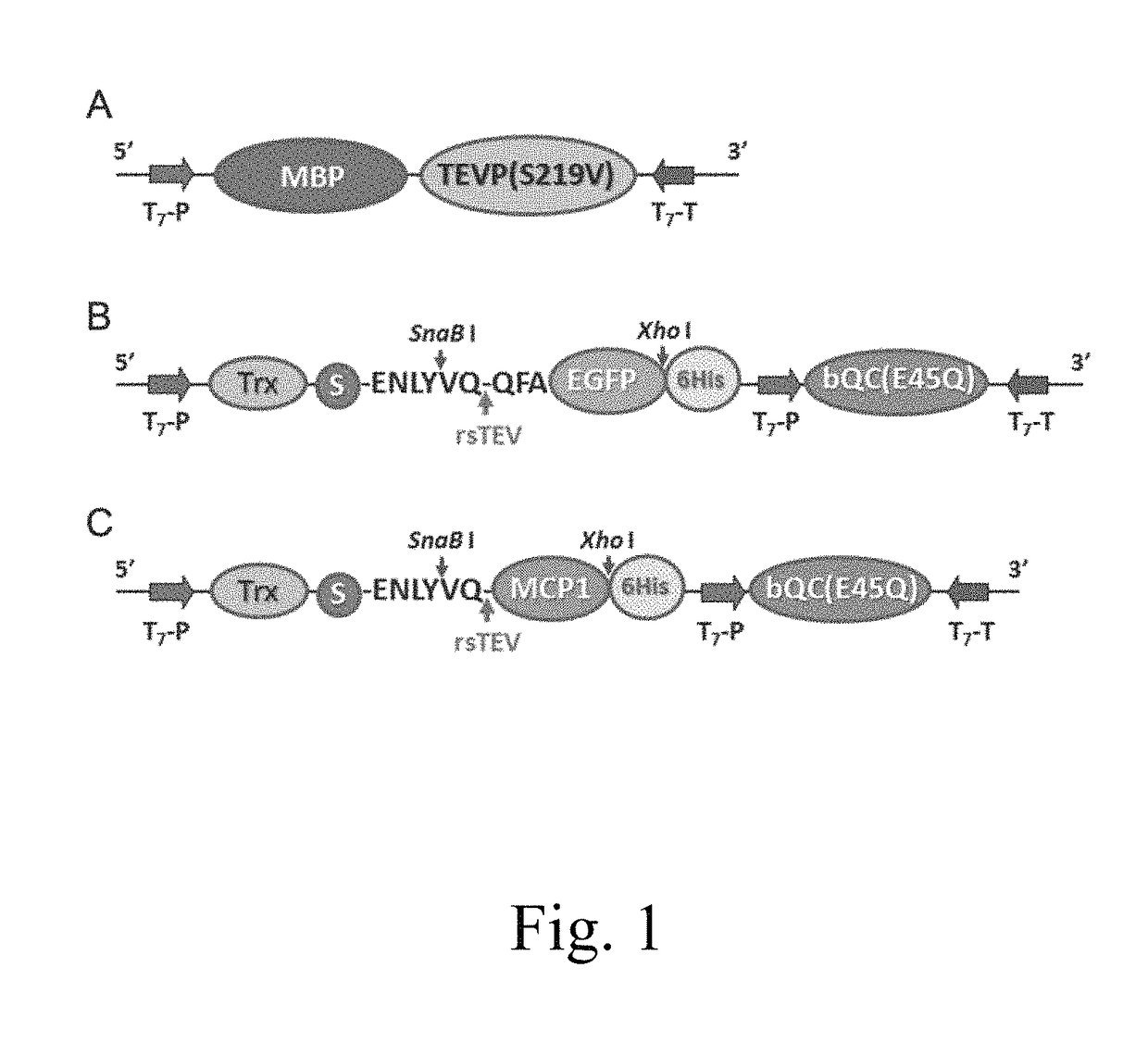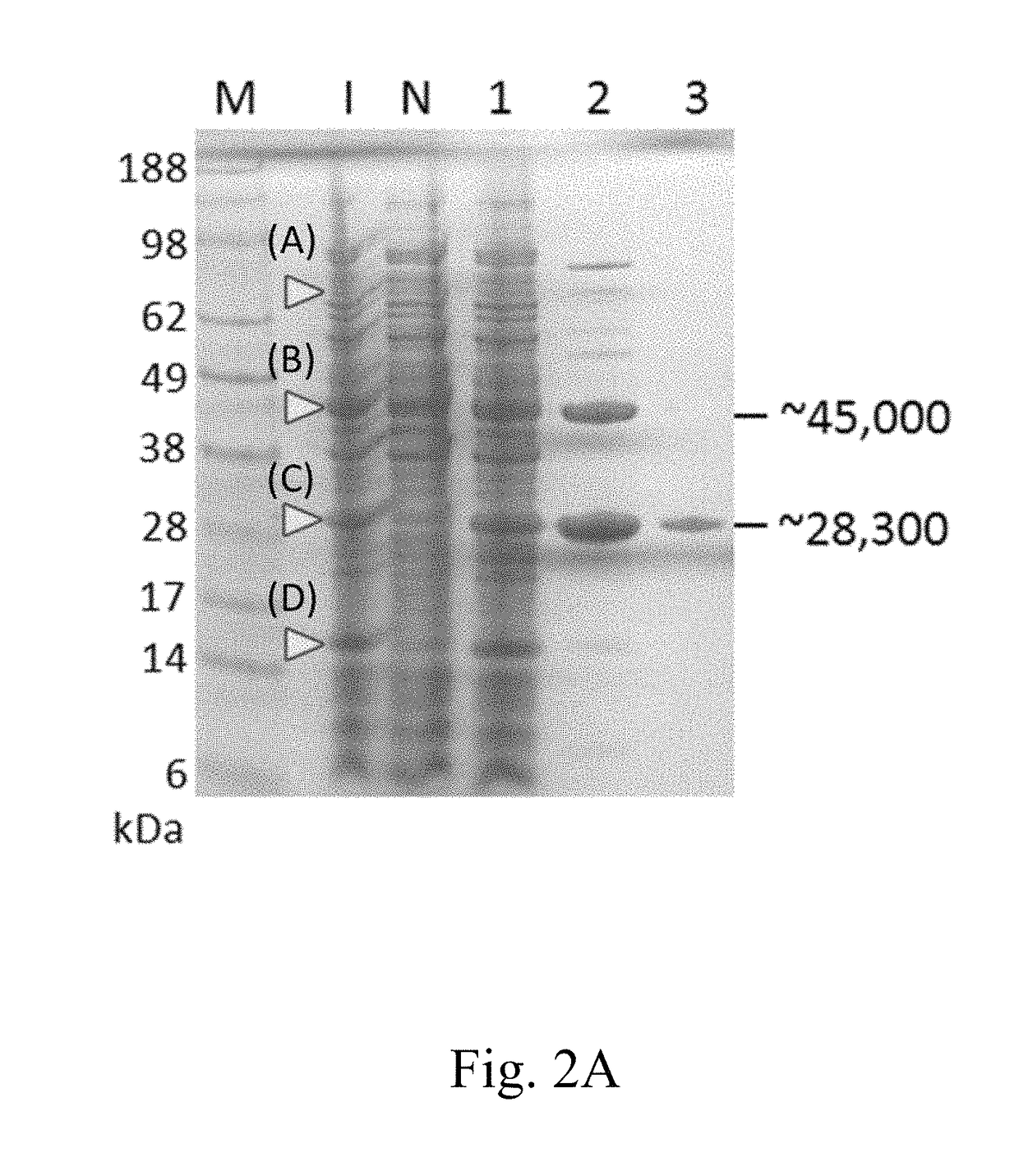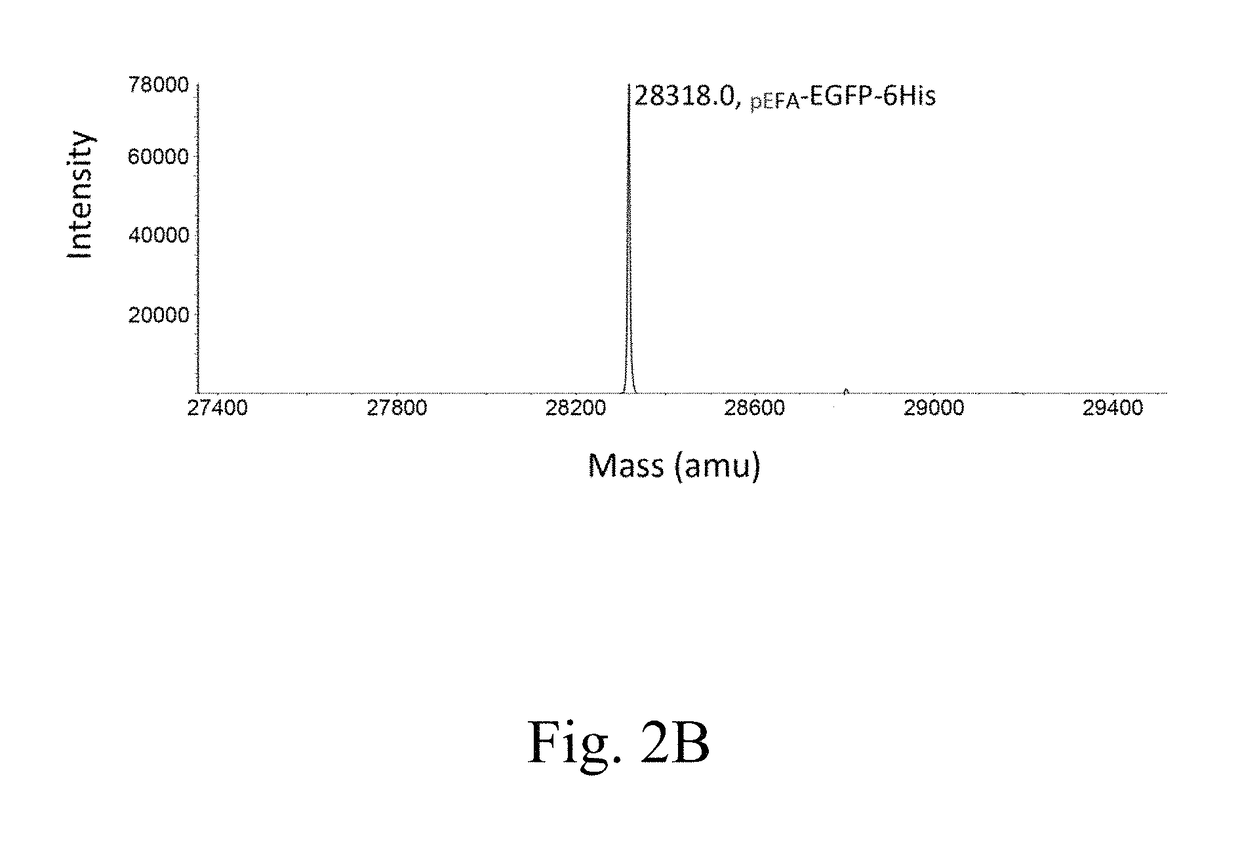Expression system for producing protein having a N-terminal pyroglutamate residue
a technology of pyroglutamate and expression system, which is applied in the field of expression system, can solve the problems of reducing product yield and not only limiting production efficiency
- Summary
- Abstract
- Description
- Claims
- Application Information
AI Technical Summary
Benefits of technology
Problems solved by technology
Method used
Image
Examples
example 1
Production of N-Terminal pGlu-Modified EGFP
[0093]The efficacy of the present expression system in producing a pGlu-modified protein was tested in the present example, in which EGFP was employed as a target protein. To this purpose, two expression vectors were respectively constructed, so that a first fusion protein MBP-TEVP, a second fusion protein Trx-rsTEV-EGFP-(His)6, and QC(E45Q) were produced.
1.1 Plasmid Construction
1.1.1 Construction of pMBP-TEVP
[0094]The first expression vector pMBP-TEVP was constructed by amplifying the DNA segments encoding MBP-TEVP (S219V) from the plasmid pMBP-TEVP (Yan-Ping Shin et al, Self-cleavage of fusion protein in vivo using TEV protease to yield native protein, Protein Science 2005, p 936-941) by PCR with a forward primer of SEQ ID NO: 9 or 10, and a reverse primer of SEQ ID NO: 11 or 12. The amplified product was then constructed into the plasmid pRSF-1b (Novagen) by restriction enzymes Nco I and Sal I so as to produce the expression vector pMBP-...
example 2
Production of N-Terminal pGlu-Modified MCP1
[0105]The efficacy of the present expression system in producing a pGlu-modified protein was further tested in a physiological QC substrate, MCP1.
2.1 Construction of pTrx-rsTEV-MCP1-(his)6-QC(E45Q)
[0106]The pTrx-rsTEV-MCP1-(His)6-QC(E45Q) was constructed in a similar manner according to procedures described in example 1.1.2, except MCP1 was employed as the target protein. Specifically, DNA segment encoding MCP1 was amplified from the nucleotide sequence of SEQ ID NO: 28 by PCR using a forward primer of SEQ ID NO: 23 and a reverse primer of SEQ ID NO: 24 or 25; the amplified DNA segment comprised an 3′-end nucleotide sequence that was complementary to the 5′-end overhang sequence of the LIC Duet Minimal Adaptor (Novagen). As described in example 1.1.2, the DNA segment encoding QC(E45Q) amplified by primers of SEQ ID NOs: 15 and 16 comprised a 5′-end nucleotide sequence that was complementary to the 3′-end overhang sequence of the LIC Duet Mi...
PUM
| Property | Measurement | Unit |
|---|---|---|
| pH | aaaaa | aaaaa |
| pH | aaaaa | aaaaa |
| flow rate | aaaaa | aaaaa |
Abstract
Description
Claims
Application Information
 Login to View More
Login to View More - R&D
- Intellectual Property
- Life Sciences
- Materials
- Tech Scout
- Unparalleled Data Quality
- Higher Quality Content
- 60% Fewer Hallucinations
Browse by: Latest US Patents, China's latest patents, Technical Efficacy Thesaurus, Application Domain, Technology Topic, Popular Technical Reports.
© 2025 PatSnap. All rights reserved.Legal|Privacy policy|Modern Slavery Act Transparency Statement|Sitemap|About US| Contact US: help@patsnap.com



